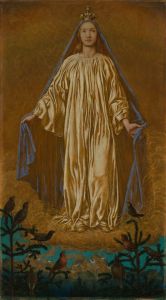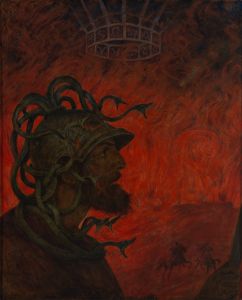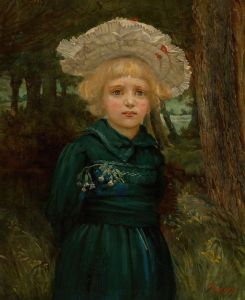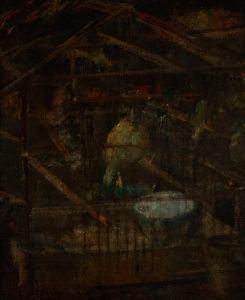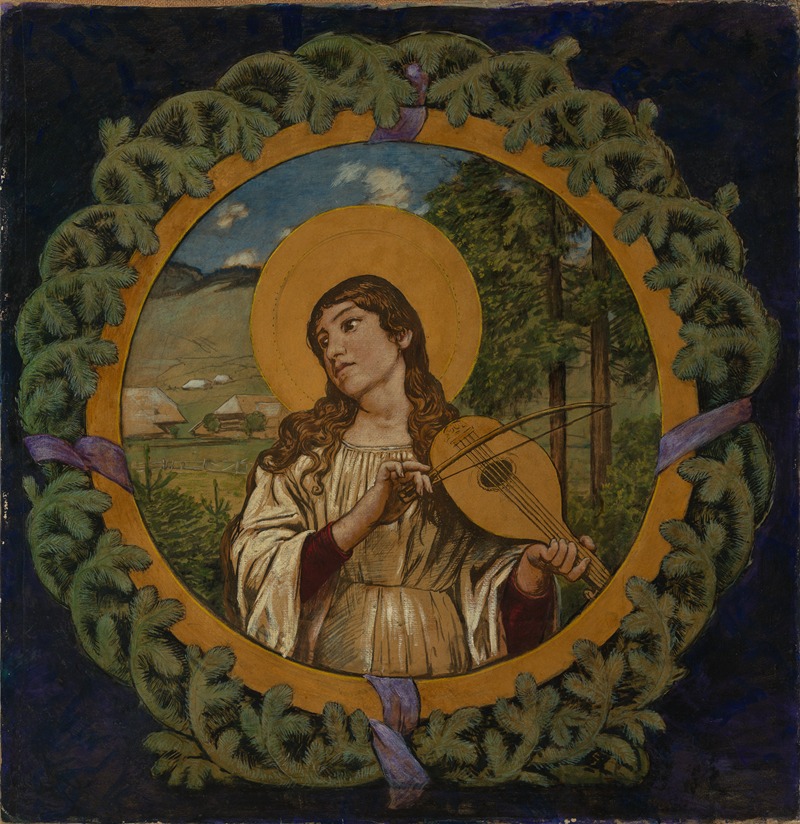
Die Heilige Cäcilie im Tannenkranz
A hand-painted replica of Hans Thoma’s masterpiece Die Heilige Cäcilie im Tannenkranz, meticulously crafted by professional artists to capture the true essence of the original. Each piece is created with museum-quality canvas and rare mineral pigments, carefully painted by experienced artists with delicate brushstrokes and rich, layered colors to perfectly recreate the texture of the original artwork. Unlike machine-printed reproductions, this hand-painted version brings the painting to life, infused with the artist’s emotions and skill in every stroke. Whether for personal collection or home decoration, it instantly elevates the artistic atmosphere of any space.
Hans Thoma's painting "Die Heilige Cäcilie im Tannenkranz" (Saint Cecilia in the Wreath of Fir) is a notable work by the German artist, who was active during the late 19th and early 20th centuries. Thoma, born in 1839 in Bernau in the Black Forest region, is recognized for his contributions to the German Romantic and Symbolist movements. His works often reflect a deep connection to nature and a fascination with mythological and religious themes.
"Die Heilige Cäcilie im Tannenkranz" is a representation of Saint Cecilia, the patron saint of music and musicians. Saint Cecilia is a popular subject in Christian art, often depicted with musical instruments such as an organ or a harp, symbolizing her association with music. Thoma's depiction of Saint Cecilia is unique in its incorporation of natural elements, particularly the wreath of fir, which suggests a connection to the artist's native Black Forest region.
The painting is characterized by its serene and contemplative mood, typical of Thoma's style. His use of color and light creates a harmonious and tranquil atmosphere, inviting viewers to reflect on the spiritual and aesthetic qualities of the scene. Thoma's attention to detail and his ability to capture the delicate interplay between the figure of Saint Cecilia and the surrounding natural elements are evident in this work.
Hans Thoma's artistic career was marked by a blend of traditional and modern influences. He studied at the Karlsruhe Academy of Fine Arts and later in Düsseldorf, where he was exposed to the Düsseldorf School of painting, known for its detailed and realistic style. Thoma also spent time in Paris, where he encountered the works of Gustave Courbet and the Barbizon School, further shaping his artistic vision.
Throughout his career, Thoma maintained a strong connection to his German roots, often drawing inspiration from the landscapes and folklore of his homeland. This connection is evident in "Die Heilige Cäcilie im Tannenkranz," where the natural setting plays a significant role in the composition. The use of the fir wreath not only adds a regional touch but also enhances the symbolic meaning of the painting, suggesting themes of eternal life and divine grace.
Thoma's work gained recognition during his lifetime, and he held several prominent positions in the German art world, including a professorship at the Städelsches Kunstinstitut in Frankfurt and later as the director of the Karlsruhe Academy. His contributions to German art were acknowledged with numerous awards and honors.
"Die Heilige Cäcilie im Tannenkranz" remains an important example of Thoma's artistic legacy, reflecting his ability to merge religious iconography with elements of the natural world. The painting continues to be appreciated for its aesthetic qualities and its representation of Saint Cecilia, a figure who has inspired artists for centuries.
While specific details about the painting's current location or provenance may not be widely documented, Hans Thoma's works are held in various collections, including major German museums. His influence on German art and his unique approach to combining traditional themes with personal and regional elements ensure that his work remains relevant and appreciated by art enthusiasts and scholars alike.








